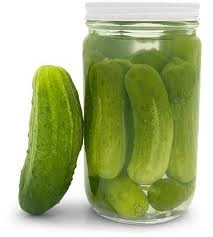Obviously the evidence for Sabine is scanty at best. I'm operating off the assumption that it would have been more closely related to Umbrian than to Oscan. My early conclusions are mostly based off of evidence of trends from the Sabellic languages of central Italy
At the moment, here are some ideas:
According to Clackson's "Subgrouping the Sabellian Branch of Indo-European", the following traits are common in all Sabellic languages:
- merging of the voiced aspirates as *f and *h;
merging of the inherited labiovelars with *p, *b;
merging of inherited final -ns and -nts as -f (Note: This later seems to have become > *fs > *ss in Oscan, but is preserved as *f in Umbrian; my assumption here is that Sabine would share the final -f accusative plural of Umbrian);
syncope of *e, *i, *o before final -s in polysyllabic words;
- Umbrian shows initial *l- > *w-, and, arguably, so too does South Picene, while Volscian may show an analogous change of *l- > *j-. Looking through Varro's "Sabine Glosses", I can't seem to find evidence either way; however, it seems that several deities listed by Varro as traditionally having been adopted by the Romans from the Sabines have names beginning in initial /l/, including "Lucina", which possibly calls for speculation that such a change did not occur in Sabine?
I assume that Sabine would end up monophthongizing the inherited diphthongs of Sabellic, as in Umbrian (this seems to be a general trend in Latium, Sabinia and Umbria, given contemporary texts describe it as present in rustic Latin);
Lenition of word-final -d, as in other Umbrian languages
I am not entirely certain if the palatalization of *k before a front vowel or the change of intervocalic *d into a retroflex consonant would have taken place in Sabine; they seem to be present in the earliest Umbrian texts that we have, but unknown (as far as we know) in the other Sabellic languages of central Italia (although South Picene, which supposedly split fairly early from Umbrian, may demonstrate a palatalization of *k);
I also assume that Sabine would have undergone the vowel mergers and syncope associated with all Sabellic languages that took place between the sixth and fourth centuries BC, but probably not anaptyxis, as this seems to be a purely Oscan trend;
It's also worth noting that, unlike Umbrian, but like Oscan, Sabine didn't seem to undergo rhotacism, if Varro can be trusted;
Help would be greatly appreciated.



 Great idea! I once had a similar idea where the Senones end up dominating in Italy and found a Celtic empire.
Great idea! I once had a similar idea where the Senones end up dominating in Italy and found a Celtic empire.